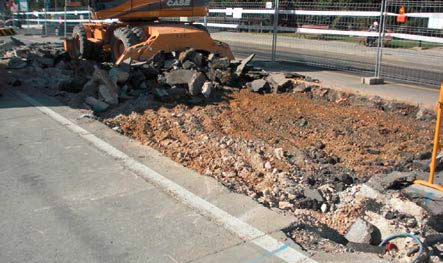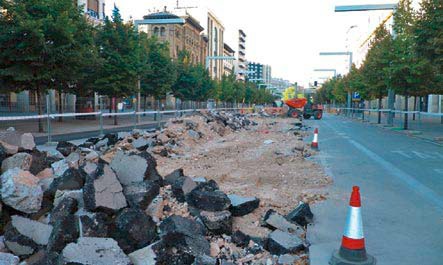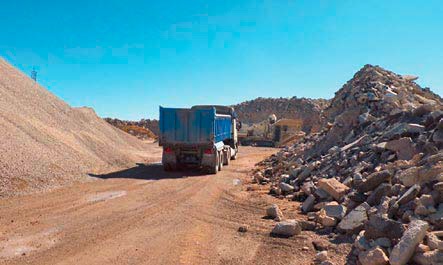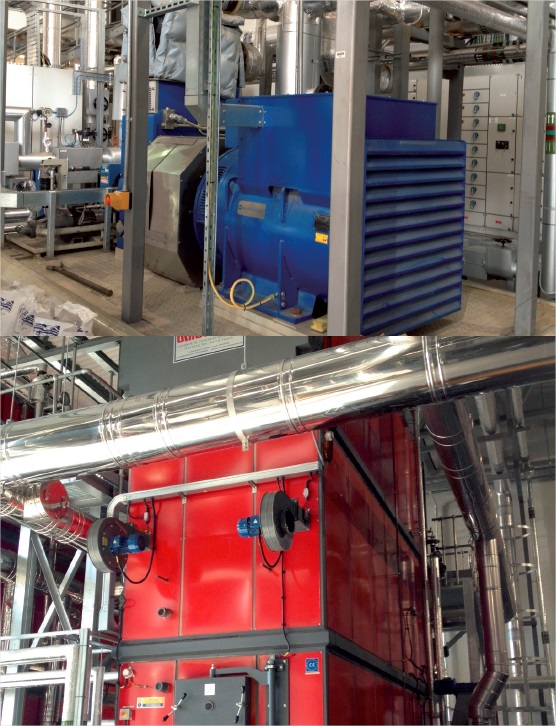Zaragoza Tram
Description of the Environmental Measure
Problem detected:
The Proposal and the Construction Project posed that the only way of managing CDW from the demolition of roads or any other structures were their disposal at an authorised landfill.
More than 115,000 m3 of this waste was expected and the only landfill which is considered by regional legislation to cover the area of Zaragoza is more than 40 km far from the city. These quantities implied the need that around 10,000 dump trucks circulate on the N-232 road - which is already saturated with heavy traffic - with the subsequent impact on the traffic at that road, the high consumption of fossil fuels and, therefore, the high emission of greenhouse gases, all against the backdrop of a high economical cost for the project.
Solutions adopted:
FCC CONSTRUCCION set forward a Waste Management Plan to the Ownership that suggested recycling this CDW, specifically the concrete and asphalt agglomerate rubble, in a plot close to the works. This measure would avoid the need to transfer CDW to a landfill, as well as it made unnecessary to transport virgin aggregates from a quarry, as the rubble resulting from the demolition would be recycled as aggregates to be used as fillers on the site.
The Waste Management Plan was approved by the Site Management and commenced with the separation at source of this CDW, followed by the collection of land, asphalt and concrete and delivering the rest of the CDW not to be recycled on the site itself (wood, steel, plastics, etc.) to an authorised waste manager. Moreover, the pertinent permits and authorisations for the recycling activities were obtained.
Currently the concrete and asphalt rubble is being crushed, obtaining aggregates of a high enough quality to be used as embankment fill, trench fill and even as an artificial aggregate for the base of the tram platform.
Results:
This experience has showed us that often the most environmentally favourable actions are, they are also the most financially viable. In short, we have a clear example of sustainable construction, which has achieved:
a significant reduction in the consumption of natural resources, because by using recycled material onsite, it was not necessary to get aggregates from borrow pits or quarries to complete the filling during the second stage of the works (in total it is esteemed that around 90,000 m3 will be used, what means 75% of the total fills used at this stage).
a significant reduction in the consumption of fossil fuels, as it is not necessary to transfer waste to a landfill or bring aggregate for fills from quarries or borrow pits offsite.
a reduction in CO2 emissions, by reducing the distance travelled by vehicles.
a reduction in heavy traffic on the N-232 and on the roads to the borrow pits. §a reduction in the volume of landfills used.
and as a consequence of all the above, a noticeable economic improvement in the results of the project.












